Last Updated on September 13, 2023
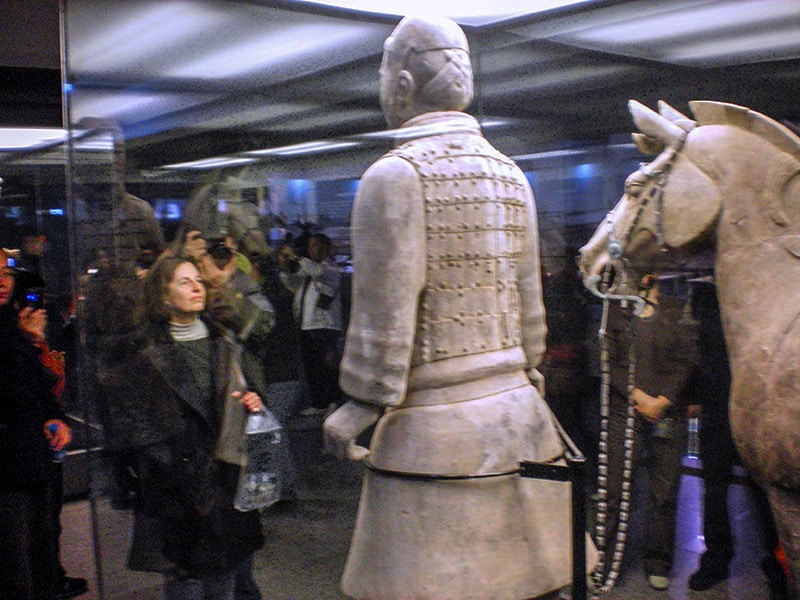
Estimated reading time: 8 minutes
By Jim Ferri
Like most travelers, we had been lured to Xian, China by its famous army of terracotta soldiers, 7,000 of them guarding the tomb of Qin Shi Huangdi, the Emperor who ruled China more than 2,200 years ago.
Although we usually travel independently, we knew that in China we’d need guides so my wife Marjorie and I had enlisted the aid of a travel agent to put the trip together.
After a two-hour flight from Beijing we were met at Xian airport by our tour guide Kathy, a young woman who we soon realized lacked the finesse and language ability of our guide in Beijing. In addition, two things about her still stick in our minds: she refused to allow us to deviate from the scripted tour and, to our amusement, continually kept referring to the toilet as the “happy room.”
After quickly taking us to the Sofitel Hotel to drop our bags off, Kathy she took us on a quick car- and walking-tour of the old city. Despite the dust and smog that seems to cover everything in this area of China, the streets and buildings in the old city were clean and everything fairly freshly painted, quite a contrast to the environmental mess you see in the suburbs as you’re flying in.
Forced Off to Lunch in Xian, China
Marjorie and I were just getting into the swing of things when Kathy announced we needed to go to lunch. Since we were only in Xian 1½ days, we wanted to skip lunch entirely, both because we weren’t hungry and we wanted to walk around the city to get a closer look at it. Kathy was adamant, however, insisting that we had to go to the Defachang restaurant.
We pushed a bit and Kathy suggested that to save time she would call our order in. Out of the glove compartment she pulled a small photo book that contained all the menu items from the restaurant. She asked us to choose our meal but it became quite confusing since every time we asked about specific dishes Kathy changed the description of the ingredients in them. It took 15 minutes to order two dishes via cell phone.
Defachang was a huge place, over 37,000 ft² on four floors, which described itself in a brochure as “a major venue of social contact for Chinese and foreign high-ranking officials and celebrities.” I was flattered, although by Western standards the place looked a bit dowdy.
When we finally arrived we found a group of brand-new cars parked outside and red confetti all over the ground. Kathy told us there must be a wedding reception going on and once inside we saw the bride in her red dress and the groom dressed all in black. Very few of the 30-or-so guests at their event were dressed up and most were men, with very few women in the party. According to Kathy the local wedding protocol is for the man’s parents to pay for the banquet.
We ate as fast as we could, and after lunch Kathy took us down into the center of Xian.
Xian – a Fascinating City
Xian had been the capital city to 11 dynasties that ruled China over a period of 4000 years, and in the ninth century is said to have been the largest and wealthiest city in the world. At its peak it had a population of over 1 million people. What sets it aside from other major Chinese cities is that it has retained its massive city walls, which still form a 9-mile rectangle about the inner-city.
We walked along the broad walkway atop the walls, while Kathy pointed out the drum and Bell towers in the distance as well as other attractions of the city. She soon had us off the ramparts and down to the Great Mosque in the old Muslim quarter in the center of the old city. The Xian mosque is one of the largest in China and is set in a neighborhood of narrow streets and lanes. The most popular area of the neighborhood, though, was the old market, which is a magnet to tourists. Although Kathy kept encouraging us to buy things, likely since she would get a commission, it was late afternoon and we decided instead to head back to the hotel.
That night we were ushered off to the de rigueur cultural performance at the Tang Dynasty Theater, a dinner theater that appeared to be created solely for American tourists. All the food, even the Chinese food, was cooked and served American-style, a disappointment to Marjorie since she enjoys Chinese food and eating with chopsticks, something I’ve never managed to master. We sat and chatted with an interesting couple from Wyoming as we watched the colorful performances.
The next morning at breakfast we found the Sofitel restaurant to be utter chaos. Many tour groups had converged on it at the same time, and everyone was descending on the buffet at once, trying to finish in time to catch the tour buses.
Off to See the Terracotta Warriors
We had a bit more leeway time-wise, and after a while we met Kathy for our drive out to the museum with the terracotta warriors. Along the way, however, we got caught in a large traffic jam with every driver trying to wedge himself into a better position. After one driver’s bumper barely touched that of another, a fight broke out with a lot of yelling and pushing, until finally a woman stepped in between the two drivers and they stopped.
When we reached the museum we found it was mostly filled with Chinese tourists, many whom appeared to just push through the entrance without buying tickets, and just a few Westerners. It was dusty and a bit drab, not as Marjorie had remembered it, much to her chagrin.
Once inside though, despite the dust and the drabness, I found it almost staggering, with a life-size army of 7,000 soldiers, archers and horses all standing in the trenched excavations silently staring ahead. Incredulously, the detail in each one was different and although they were originally painted, the paint has long since faded.
From the walkways around the huge pits – there are three of them the size of several football fields – we watched the excavation and restoration work that was still going on. Although you can’t get into the actual pits, you can get close to several of the warriors in the adjacent exhibition area.
We could easily have spent an additional day in Xian if we had the time, which, unfortunately, we didn’t. Then we could have discovered more of the city and its culture off-the-beaten government tourist track. Obviously, something to be accomplished sans guide.
You may also enjoy: Essential Beijing for the Independent Traveler / Traveling in Japan – The Best Places To See / Best City in Vietnam: Hanoi or Ho Chi Minh?
If you go:
China National Tourist Office (New York)
370 Lexington Avenue, Suite 912
New York, NY 10017
Tel: (888) 760-8218
China National Tourist Office (Los Angeles)
550 North Brand Boulevard, Suite 910
Glendale, CA 91203
Tel: (800) 670-2228
http://www.cnto.org

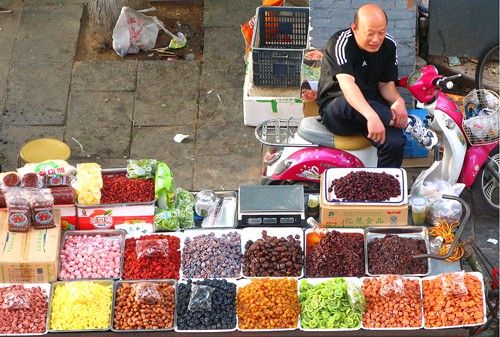
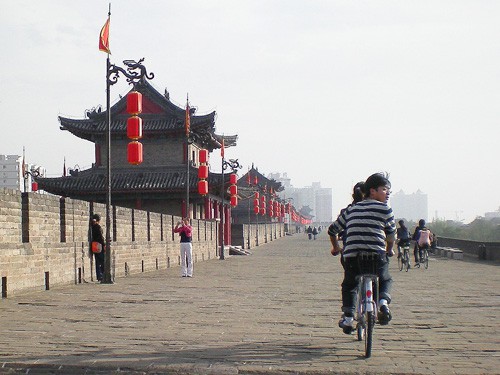
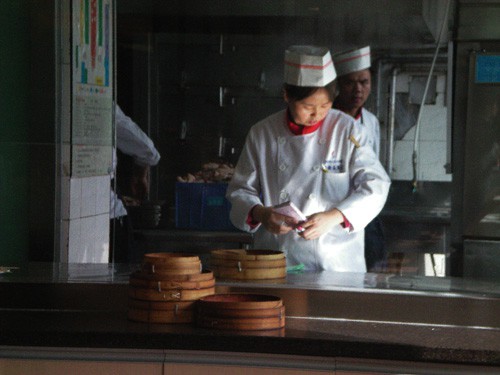
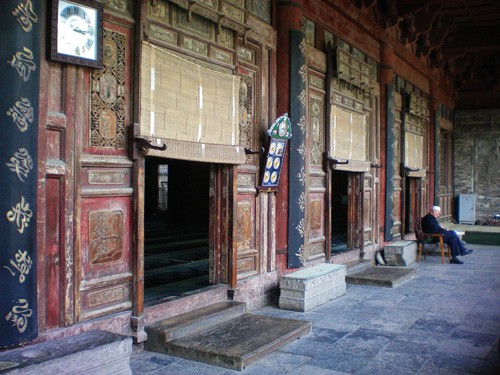
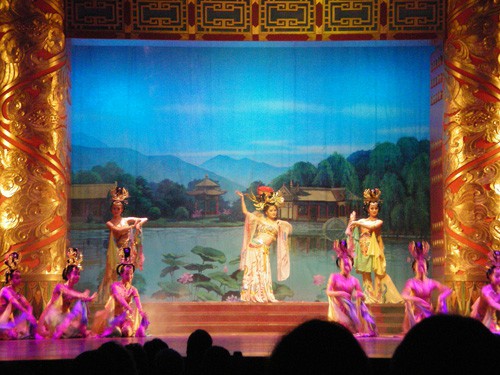
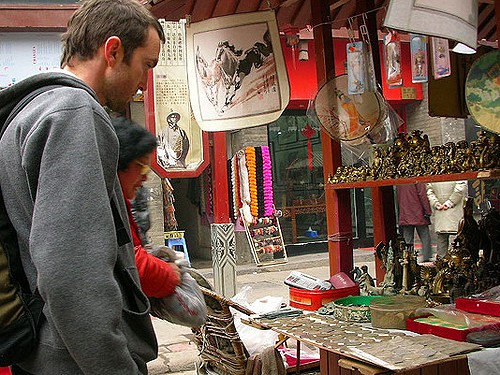
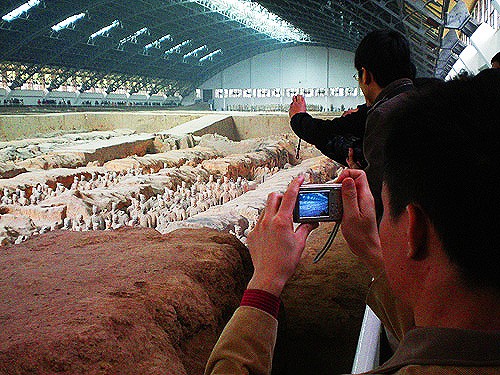
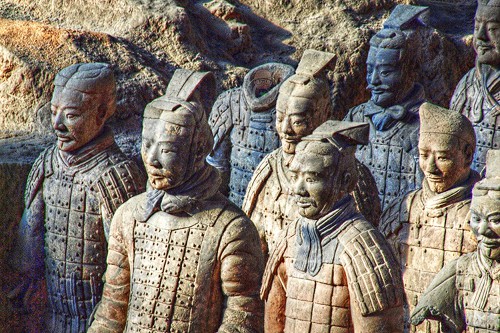
Jim – Again you brought back fond memories. I was there in 1983 and from your description the excavation area is the same. But, if I remember right, there was only one walkway when I was there. Also I don’t remember the exhibition area where Marjorie is standing. I would love to compare the difference now and see how many more warriors have been uncovered. Thanks for sharing you visit.
If you give me any more of these “Thanks for the Memories…” people will start calling me Bob Hope. Glad you liked it.
Jim
Interesting but your comments seemed skeptical. We were there for three weeks in 2005 and found everything cleaner and our guide was much more “open” about life there. For inexperienced travelers, though, I would have recommended an agency tour(as opposed to “do it yourself”) where their is a group and more leverage. China is NOT Europe.
Dorothy & Dick
We hadn’t really done it ourselves but worked through a large agency here in the US, which booked all our tours (the guides we had in other places were very good and open). And you have a good point about China not being Europe. Marjorie was there in 1997 when everything was clean also. But factories have been built outside the city which now heavily pollute the air. The same is true in Beijing.